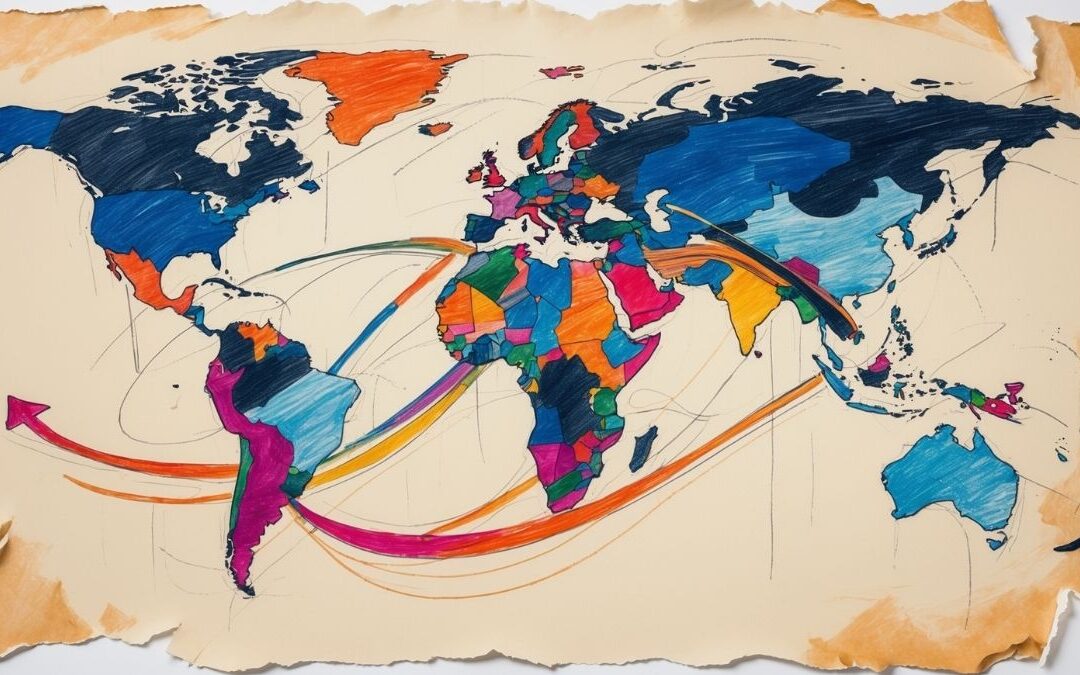- Early Human Ancestors: Evolutionary Milestones
- Keywords
- Key Takeaways
- Frequently Asked Questions (FAQs)
- Why was bipedalism so important in human evolution?
- How did tool-making influence the development of early human brains?
- Did Neanderthals and Homo sapiens coexist?
- How did fire contribute to dietary changes?
- Why did some early human species, like the Neanderthals, go extinct?
- How did the discovery of tools impact social structures among early humans?
- Were early human ancestors purely carnivorous?
- Did all early human species migrate out of Africa?
- What role did changing environments play in human evolution?
- How did language and communication evolve in early humans?
- Myth Buster
- Myth: Neanderthals were unintelligent brutes.
- Myth: Early humans lived exclusively in caves.
- Myth: Homo sapiens were the only species to use tools.
- Myth: Bipedalism means walking only on two legs.
- Myth: Early humans tamed dinosaurs.
- Myth: All early human species were direct ancestors of modern humans.
- Myth: The “missing link” is a single transitional fossil that connects humans and apes.
- Myth: Homo erectus is just an older version of Homo sapiens.
- Myth: Neanderthals and modern humans are the same species.
- Myth: Fire was “discovered” by Homo sapiens.
Early Human Ancestors: Evolutionary Milestones
Once upon a time, in the vast expanse of the African landscape, an adventurous ape, let’s call him Al, looked out from his treetop perch. While his buddies were content swinging around and munching on fruits, Al had other ideas. Perhaps it was the lure of the ground-level buffet or maybe just an ancestral mid-life crisis, but Al decided to try something different – he stood upright and took a step. That tiny step would become one of the most monumental leaps in our evolutionary journey.
But let’s back up a smidge. You see, before Al and his bipedal dreams, there were other actors on this stage. Our tale truly begins with a group called the Australopithecines, who lived around 4 million years ago. Picture them as furry little creatures, not unlike modern chimps but with a twist: they were experimenting with walking on two legs. But why the shift? Maybe the changing environment had a role, turning lush forests into open grasslands. Or perhaps they just wanted a better view of the savannah’s Friday night lights. Whatever the reason, bipedalism was the latest trend.
Walking upright did have its perks. Hands were freed up, which led to all sorts of exciting possibilities, like carrying food or holding hands on long romantic walks. But, as with any innovation, there were challenges. The spine, pelvis, and legs had to adapt to this new lifestyle, and there were bound to be a few aches and pains along the way.
Now, back to Al. As time passed, our daring protagonist and his descendants, the Homo genus, began to venture further, exploring new territories and, importantly, experimenting with their diet. While their predecessors were mostly vegetarian, these guys decided to add some meat to the menu. But acquiring meat required some creativity. Enter the Stone Age’s first tool kit!
Early tools were simple – just rocks and bones modified to do a job. But they opened up a realm of possibilities. Homo habilis, often dubbed the “handy man,” took tool-making to a new level. These tools allowed our ancestors to hunt, butcher meat, and probably show off at social gatherings. “Look at my new, sharp-edged rock! Isn’t it shiny?”
With tools and an upgraded diet, brain sizes began to increase. A bigger brain meant more complex thoughts, better problem-solving skills, and possibly the first inklings of existential crises. This cognitive leap was significant. Tribes could now communicate more efficiently, plan hunts, and set the foundation for the world’s first societies.
Then came a real game-changer: fire. Nobody knows precisely who, let’s call her Fiery Fiona, first tamed this wild beast, but this discovery was hot news. Fire provided warmth, protection, and the means to cook food. Cooking not only made food tastier but also easier to digest, which probably led to some early version of food critics.
But, of course, life wasn’t just about tools, fire, and fancy cooked dinners. Our ancestors had to deal with the challenges of a changing climate, rival tribes, and predators. There was drama, love, conflict, and discovery – all the makings of a blockbuster story.
As millennia passed, various species of the Homo genus began to walk the Earth. Some, like Homo erectus, traveled far and wide, leaving Africa and setting up homes in Asia and Europe. They even mastered the art of wearing clothes (because, you know, winters outside Africa can be nippy).
Fast forward a bit, and we meet the Neanderthals, our burly cousins who lived in Europe and Asia. They had large brains, strong bodies, and a penchant for art and jewelry. They were the sophisticated Europeans of the Paleolithic era. But, as fate would have it, they eventually vanished, leaving behind mysteries that scientists are still trying to unravel.
Finally, around 300,000 years ago, a species emerged that would come to dominate the globe: Homo sapiens – that’s us! We had the brains, the tools, and the charisma to spread to every corner of the world.
But let’s not forget our humble origins. From the moment Al decided to take that first step on the African plains, to the complex societies we’ve built today, our journey has been nothing short of extraordinary. It’s a tale of resilience, innovation, and sheer determination. So, the next time you use a tool, cook a meal, or simply take a walk, give a nod to those early ancestors who made it all possible. They set the stage, and what a riveting saga it has been!
Keywords
- Australopithecines: Early ancestors of humans who lived around 4 million years ago, showing the first signs of walking on two legs.
- Bipedalism: The ability to walk on two legs, a significant evolutionary step differentiating some early human ancestors from other primates.
- Homo genus: A group of species in human evolution following the Australopithecines, notable for their advancements in tool-making and cognitive abilities.
- Homo habilis: A species often referred to as the “handy man” because of its advancements in tool-making.
- Stone Age: A prehistoric period marked by the creation and use of stone tools.
- Fire: An elemental force tamed by early humans, providing warmth, protection, and a means to cook food.
- Homo erectus: An early human species known for its migrations out of Africa to parts of Asia and Europe.
- Neanderthals: Another species of early humans, known for their physical strength, brain size, and contributions to art and culture.
- Homo sapiens: Modern humans, emerging around 300,000 years ago and eventually dominating the globe.
- Paleolithic era: The early period of the Stone Age, marked by the use of simple stone tools.
Key Takeaways
- The evolutionary journey of humans began with the Australopithecines trying bipedalism.
- The shift to bipedalism freed hands, leading to advancements like carrying food and crafting tools.
- Early tools, though simple, revolutionized hunting, food processing, and other activities.
- The advent of fire significantly enhanced survival chances and culinary possibilities.
- Our early human ancestors faced challenges from changing climates, rival tribes, and predators.
- Different species within the Homo genus had distinct cultural and evolutionary milestones.
- Homo sapiens, or modern humans, emerged as the dominant species after millions of years of evolution.
Frequently Asked Questions (FAQs)
Why was bipedalism so important in human evolution?
Bipedalism allowed early human ancestors to free their hands, which later led to the use and creation of tools. This ability also gave them a height advantage to see over tall grasses in the savannah, possibly spotting potential predators or prey.
How did tool-making influence the development of early human brains?
The act of crafting tools required cognitive abilities, spatial reasoning, and problem-solving skills. As these tools became more intricate, the brain evolved to accommodate these new challenges, leading to increased brain size and capabilities.
Did Neanderthals and Homo sapiens coexist?
Yes, there is evidence suggesting that Neanderthals and Homo sapiens overlapped for several thousand years and might have even interbred.
How did fire contribute to dietary changes?
Fire allowed early humans to cook food, making it more palatable, easier to digest, and safer by killing pathogens. This made certain foods, especially meat, more accessible and nutritious.
Why did some early human species, like the Neanderthals, go extinct?
The exact reasons are still debated, but factors may include climate changes, competition with Homo sapiens, and susceptibility to diseases.
How did the discovery of tools impact social structures among early humans?
With tools, hunting became more efficient, leading to shared meals and communal activities. This could have strengthened social bonds, communication, and cooperation.
Were early human ancestors purely carnivorous?
No, they had a varied diet that included plants, fruits, and, eventually, meat. The inclusion of meat was a later addition and was facilitated by the creation of tools.
Did all early human species migrate out of Africa?
Not all. While species like Homo erectus ventured out, some, like certain Australopithecines, remained in Africa.
What role did changing environments play in human evolution?
Changing environments, such as shifting from dense forests to open grasslands, prompted adaptability. It influenced diet, mobility, and even physical attributes like body size and skin color.
How did language and communication evolve in early humans?
The evolution of complex language is still debated, but it is believed that the increasing brain size, social interactions, and tool-making played a role in its development.
Myth Buster
Myth: Neanderthals were unintelligent brutes.
Reality: Neanderthals had a brain size comparable to or even larger than modern humans and had cultural practices like burial rituals and art.
Myth: Early humans lived exclusively in caves.
Reality: While caves provided shelter and have left behind traces of human activity, early humans also likely built temporary shelters in open areas.
Myth: Homo sapiens were the only species to use tools.
Reality: Tool use predates Homo sapiens. Earlier species like Homo habilis and even some Australopithecines used tools.
Myth: Bipedalism means walking only on two legs.
Reality: Early bipedal creatures likely used a combination of walking on two legs and climbing trees.
Myth: Early humans tamed dinosaurs.
Reality: Humans and dinosaurs did not coexist. Dinosaurs went extinct around 65 million years ago, long before the emergence of early human ancestors.
Myth: All early human species were direct ancestors of modern humans.
Reality: Human evolution is more of a branching tree than a linear progression. Some species were offshoots that did not directly contribute to the lineage of modern humans.
Myth: The “missing link” is a single transitional fossil that connects humans and apes.
Reality: The term “missing link” is outdated. Human evolution involves many transitional forms, not just one.
Myth: Homo erectus is just an older version of Homo sapiens.
Reality: Homo erectus is a distinct species with its own set of physical and cultural characteristics that lived long before Homo sapiens.
Myth: Neanderthals and modern humans are the same species.
Reality: While closely related and even interbreeding, they are distinct species with unique evolutionary histories.
Myth: Fire was “discovered” by Homo sapiens.
Reality: The controlled use of fire predates Homo sapiens, with evidence suggesting Homo erectus or even earlier species harnessed it.










0 Comments